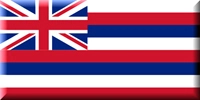The Conscious Evolution Lifestyle
Video Link: https://vimeo.com/316855612
Video Download: Live Consciously And Live Better Part 1
Video Stream: Live Consciously And Live Better Part 1
Video Link: https://vimeo.com/316862359
Video Download: Live Consciously And Live Better Part 2
Video Stream: Live Consciously And Live Better Part 2
Video Link: https://vimeo.com/316872905
Video Download: Live Consciously And Live Better Part 3
Video Stream: Live Consciously And Live Better Part 3
Video Link: https://vimeo.com/316875905
Video Download: Live Consciously And Live Better Part 4
Video Stream: Live Consciously And Live Better Part 4
Video Link: https://vimeo.com/316885937
Video Download: Live Consciously And Live Better Part 5
Video Stream: Live Consciously And Live Better Part 5
Video Link: https://vimeo.com/316894873
Video Download: Live Consciously And Live Better Part 6
Video Stream: Live Consciously And Live Better Part 6
Video Link: https://vimeo.com/316899259
Video Download: Live Consciously And Live Better Part 7
Video Stream: Live Consciously And Live Better Part 7
At last! The Complete, Total Blueprint for How to Live a Conscious Evolution Lifestyle
The facts are in, and the conclusions are clear and inescapable: Human Growth Hormone Replacement Therapy (HGH) and Testosterone Replacement Therapy (TRT) have ushered in a golden age of youthfulness, vitality, and physical and mental fitness.
For the first time in history, we are actually able to erect a powerful roadblock to aging…and even begin to push the clock backward.

This is the miracle of HGH and TRT. In fact, if you do nothing else…absolutely nothing else…the results will shock and amaze you, as you experience and witness in awe the incredible transformations these therapies produce.
But why stop there There is more you can do, so much more. And the best news is this: The Conscious Evolution Lifestyle is easy to adapt.
There's much more to tell you, but before we delve into details, keep in mind the over-riding, single philosophy of Conscious Evolution: you are in charge! You and only you will make the decisions that will propel your vitality, health, youthfulness, and personal improvements to unimaginable heights.
That's right. Once you begin to make these positive changes in your life, you will see and feel the difference - the astonishing, mind-boggling difference - in all areas of the quality of your life.
But first, let's take a brief look at the big picture where we've been and where we're at now. And, most important, where we have the potential to be in the immediate future.
Did you know that for most of human history, the average human lifespans were minuscule in comparison to today's standards? Anthropologists tell us that our cave-dwelling ancestors were, for the most part, toothless at 25, dead by 35.
As recently as 1900, the average male lifespan in America was 47 years.
Read that number again, and let it sink in. In the overall scheme of things, 1900 was a mere nanosecond in the past.
However, thanks to breakthrough's in medicine, hygiene, and nutrition, the 20th century witnessed an explosion in life expectancy.
Living until the late '70s and '80s became the expected norm, not the exception that had previously been the case.
However, in the past few decades, we have experienced a reversal in this longevity trend. Not only are we not living longer, but we are spending an increasing number of years languishing in poor health.
When American lifespans are compared to 34 other developed nations, Americans have dropped from number 20 in 1990 to number 27 in 2010. This is even though per-capita health care spending in the United States is far higher than any other country, and we lead the world in medical research.
So, what's the problem? Why is this so?
There is no one direct cause of the pathetic state of health for all-too-many Americans. Poor dietary choices, lack of physical activity, chronic sleep deprivation, dehydration, and stress all add up to take a terrible toll on our health.
However, on second thought, perhaps it all boils down to one cause after all:
The failure to live a Conscious Evolution Lifestyle
Think about it. Every one of the problems listed above is a direct result of bad decision making when it comes to lifestyle choices…every last one of them.
At first glance, this may seem depressing. However, upon deeper reflection, it is actually encouraging, since it proves what was mentioned earlier: The philosophy of the Conscious Evolution Lifestyle is that you are in charge, for better or worse.
With that in mind, let's take a look at the proven, scientific principles of Conscious Living, principals that you can put to work immediately.
Why supplements are needed…the grim reality is that eating right is not enough
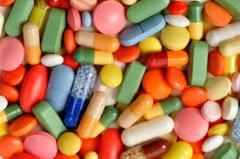
How could that be? After all, we are what we eat, right? Yes - and that's the problem. Here's why. Did you know…
The way we eat has changed more in the past 50 years than in the previous 10,000 years
If you took a stroll through the aisles of today's supermarkets, you could count up to 47,000 products - or more
A great many of these products turn out to be artificial byproducts of just one acidic food - corn. Quick quiz: Which of the following contains ingredients derived from corn? (a) A McDonald's Big Mac; (b) Corn Flakes; (c) Pepsi Cola; (d) Smucker's Jam; or (e) Wonder Bread. Answer: all of them. And then some.
The American food supply is drowning in corn. Last year, U.S. farmers reaped 13 billion bushels of the yellow stuff-the most abundant corn harvest in American history. Such bumper crops, made possible in part by massive federal subsidies to corn farmers, help keep corn prices and food prices in general down, but health experts worry that the glut of corn is harming our health. And it is…since corn is acidic, it wreaks havoc on the all-important pH level of our acid/alkaline balance
If that weren't bad enough, many of the essential foods in our diet have been genetically engineered - and the food industry is moving mountains to pass laws that will not require them to label these foods as "Frankenfoods."
In their mad scramble for profits, the food industry has created a food supply system that is dangerously vulnerable to bacterial contamination. Proof? Last year, 73,000 Americans got sick from the deadly E. coli
Don't forget the dangers of cloning. Last year the food industry obtained permission from the Food and Drug Administration (FDA) to put meat from cloned animals on the shelves of your local markets without labeling them!
Due to soil depletion and drugged livestock, our food is far less nutritious today than 50 years ago. In fact, much of the food is nutritionally worthless - and can easily make you sick.
Our Paleolithic ancestors were free of the crippling diseases that plague modern folks. But their food and game were produced from soils that were much richer in vitamins, minerals, and nutrients than today's ground.
This is why supplements are so important
However, hopefully, you get the point. The food you eat is by far, the best way to get the nutrition you need. But the issues mentioned above make this task at best challenging.
Therefore, supplements are not an option. Here are our supplement recommendations for the Conscious Evolution Lifestyle:
A daily multivitamin. Consider this your nutritional insurance policy. Due to soil depletion, it has become more challenging to obtain all of our vitamins and minerals from our food alone. Buy a balanced product, not overloaded with some nutrients, and underweight on others. The key is to experiment by trying a few different varieties and let your body tell you what is working best.
Vitamins B, C, D, and E. These are recommended in addition to your multivitamin. Vitamins B & C are water-soluble, so don't be too concerned about taking too high a dose. We suggest you start small to discover your tolerance. Vitamin E is fat-soluble and is, therefore, best absorbed when taken with a meal containing some healthy fat. When buying Vitamin E, always look for a brand that contains mixed tocopherols (including gamma-tocopherol), the type of Vitamin E with the best cancer-fighting properties.
Avoid the form of Vitamin E called alpha-tocopherol. This form is synthetic and lacks the vitamin's seven other compounds: three tocopherols (gamma, beta, and delta) and four tocotrienols. Some companies love to cut costs - at your expense. Don't fall for it. Finally, there are two primary forms of Vitamin D: Vitamin D2 (Ergocalciferol) and Vitamin D3 (Cholecalciferol). D2 is synthetic and is found in fortified milk and cereals. The trouble with this form is that it is not the same as the Vitamin
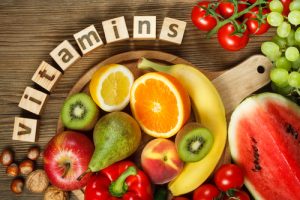 D that comes from the sun. Also, it has a shorter lifespan.
D that comes from the sun. Also, it has a shorter lifespan.D3 is far more potent and goes to work immediately, fighting a plethora of diseases: cancer, hypertension, diabetes, osteoporosis, and many more. Also, Vitamin D3 acts as a robust immune system strengthener. Get D3 and avoid D2. Once again, don't fall for the cost-cutting company's sleight-of-hand.
Fish Oil. From battling depression to protecting your heart and easing the pain of your joints, omega three fish oil is an all-star. Add it to your starting line-up.
Melatonin. In addition to helping you fall into a deep, restorative sleep, this miracle hormone also promotes the release of growth hormone and is a potent anti-oxidant. Melatonin is produced and secreted by the pituitary gland, and as with so many things, it's production declines with age. Restoring it to youthful levels has resulted in many benefits.
Ribose, Magnesium, CoQ10, and L-carnitine. If you are looking to preserve the health of your heart - the most important muscle in your body - or if you are recovering from heart problems, then put this winning team to work. They work synergistically to boost your heart health…control your blood pressure…skyrocket your energy levels…and regain your youthfulness.
As with vitamins, there are two different kinds of CoQ10: ubiquinone and ubiquinol. Animal and human studies clearly show that ubiquinol is much better absorbed than ubiquinone. Look for this form when buying CoQ10.
Astaxanthin. This substance may be the most potent and efficient antioxidant available. Reduced inflammation, improved joint health, skin condition, and eye health are among the numerous benefits that have been reported. When it comes down to destroying free radicals (causes of aging), astaxanthin is 550 times stronger than vitamin E, and 6,000 times more potent than vitamin C! WOW! Jump on this bandwagon NOW.
Phosphatidylserine (PS). Many drug-free body-builders have experienced muscle growth and increased strength with phosphatidylserine (PS). This is due to the ability of PS to block the release of cortisol…a muscle-melting, testosterone-destroying, stress-producing hormone. PS prevents the release of cortisol safely and naturally. Users have reported more testosterone levels, a laser-like mental focus, and increased fat loss with PS.
Resveratrol and Pterostilbene. Resveratrol became somewhat of a household word in the late 1990s when it was shown to be the reason that the French can drink wine daily, eat tons of fatty, artery-clogging foods, and still have better cardiovascular health than most Americans. In fact, studies have shown that it may activate the "longevity gene."
One reason may be that resveratrol mimics the effects of calorie restriction. A dramatic reduction in caloric intake has knocked-out the activity of many genes that promote cancer. Since living on a starvation diet is something most of us are not lining up for, resveratrol has seen an explosion in popularity. Pterostilbene is closely related to resveratrol, and it produces beneficial effects on gene expression in ways that enhance resveratrol. This is what makes this combination so incredibly efficient.
Alpha Lipoic Acid (ALA). Yet another devastating weapon in the war against aging and it's agents: free radicals. Free radicals are always on the attack in our body, destroying our tissues and weakening our organs and cells.
Free radicals respect no boundaries. They attack everywhere in our bodies, from our brains, livers, hearts, and nervous systems. What makes ALA so unique is this: unlike vitamin C, which is not lipid-soluble, and can't penetrate the lipid walls of cell membranes. Unlike vitamin E, which is not very water-soluble, ALA is both! This means that it can go on the offensive against free radicals…anytime, anywhere.
DHEA. (dehydroepiandrosterone). This hormone is produced by the adrenal gland, and as
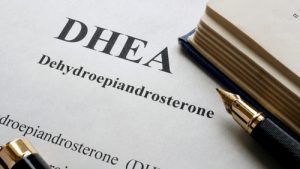 with so many hormones, it begins to decline around age 30. Studies have shown that the level of DHEA in the body is an excellent predictor of age-related afflictions such as cancer, diabetes, a weakened immune system, and atherosclerosis (hardening and clogging of the arteries). Some research even supports the claim that it can extend the human lifespan.
with so many hormones, it begins to decline around age 30. Studies have shown that the level of DHEA in the body is an excellent predictor of age-related afflictions such as cancer, diabetes, a weakened immune system, and atherosclerosis (hardening and clogging of the arteries). Some research even supports the claim that it can extend the human lifespan.Glutathione. This little-known amino acid is often referred to as "the master antioxidant" for the effect it has on all the other antioxidants. Glutathione has the amazing ability to destroy free radicals and poisons like heavy metals and mercury out of your body. When we're young, our bodies make enough of it to smash toxins before they can do damage. But if you are stressed, older, or otherwise weakened due to illness, your levels of glutathione are low…usually too low to do the job that glutathione is made to do: grab mercury, heavy metals, other poisons and toxins by the neck…and show them the exit door.
The bad news: some studies have shown that supplementation with pills or tablets is useless since most of it doesn't make it past the stomach. But don't despair. The most effective way to put this powerhouse weapon against aging to work for you is to apply glutathione cream to the skin, in the direct vicinity of the liver ( on the lower right side of the torso, just below the right ribcage). It is so important to increase your glutathione levels. Your liver needs all the help it can get in the ongoing life-and-death struggle against free radicals, mercury, and toxins. Give it a fighting chance to win.
Telomerase. We may have saved the best for last. Telomerase is the enzyme that helps to restore the biological clocks at the ends of your DNA called telomeres. Without getting too scientific, here's how this works: every time your cells divide, your telomeres shorten. Eventually, this causes your cells to stop dividing. The result?DEATH!
Another analogy is the plastic ends of your shoelaces. They protect your shoestrings and prevent them from fraying and falling apart when they are worn out, trouble occurs. The take- away? We must slow down the loss of telomeres to slow aging. Companies are in a mad scramble to produce a high-quality, yet affordable supplement to provide this desperately needed protection. We will keep you updated on all developments along those lines.
This is far from a comprehensive list of supplements. If you have specific conditions, other supplements can be helpful. For example, Milk Thistle, Saffron, Licorice Root, Astragalus Root, and N-Acetyl-Cysteine (NAC) can protect the liver.
Saw Palmetto, Stinging Nettle, Lycopene, Pygeum Africanum, Beta-Sitosterol, Zinc, and Pumpkin Seed are great for the prostate.
The Chinese herb Dong Quai can provide relief from painful menstrual cramps, and if you have sore joints, Hyaluronic acid, Glucosamine, MSM, Chondroitin, and Tart Cherry can be a blessing. And, if you're having trouble falling and staying asleep, Melatonin, Valerian Root, and Tryptophan can be the answers you've been looking for.
The takeaway is this: Supplements will not replace good eating habits, and what is on your plate is the best way to take in your nutrients. But supplements can plug gaps…and multiply the effects of HGH and TRT many times over.
Things evolve quickly in the field of supplements, and it is hard to keep up with all of the changes. That's where we come in. It is our job to keep you abreast of all new supplemental developments…and we will.
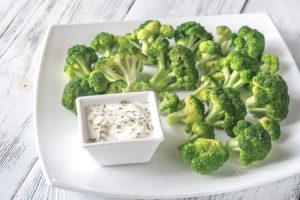 However, always remember that proper nutrition is still king!
However, always remember that proper nutrition is still king!
Why you must avoid dehydration at all costs
No question about it: drinking an adequate amount of water is essential to maintaining good health.
The human body is approximately 65-70% water, and water is present in virtually every cell and tissue in the body. Remember this simple rule: without water, life is impossible.
Water is the key to enabling the body to maintain homeostasis - internal stability and balance. The body uses water to keep the correct temperature, remove wastes and lubricate joints.
The 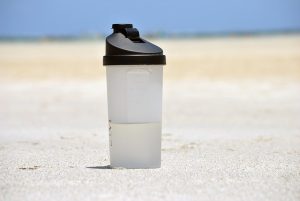 average person loses approximately 2.5% of water per day through urination, sweat, and even breathing. We lose water much faster when the weather is hot, when exercising, or if we have a fever.
average person loses approximately 2.5% of water per day through urination, sweat, and even breathing. We lose water much faster when the weather is hot, when exercising, or if we have a fever.
Our cells are made up of water and require an adequate supply of water to function correctly.
Dehydration has adverse effects on our vital organs like the heart, brain, kidneys, liver - even our skin.
Several studies have shown a link between water intake levels and coronary heart disease. The most crucial factor here is Blood Viscosity, which is a measure of the thickness of blood. To keep things simple, the thinner the blood, the easier it flows through the body.
Thick blood can cause clots in the veins, which can force the heart to work harder to pump the blood. Over time, this can dramatically increase the chances of heart problems.
Elimination of waste products (via urination)
Strengthening the immune system
Lubricating the joints
Proper liver and kidney function
Adequate functioning of the lymphatic system
Improved muscle tone
Production of hormones and neurotransmitters
Regulation of body temperature (via sweat)
Respiration
Improved skin tone
In addition to the above, water has been shown to improve the condition of many diseases and afflictions that commonly affect so many of us.
Since these facts have been known and scientifically proven, they have been publicized by nutritionists, physicians, personal trainers, and just about everyone else involved in health and fitness. In short, the health benefits of drinking water no longer need to be debated.
The best way to get into the habit of drinking more water is to start substituting water for your other favorite beverages gradually.
A bit of lemon helps to add a bit of flavor to your water if desired. No matter how you do it, just do it! Make drinking more water a top priority.
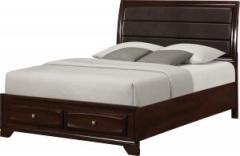
The importance of a good night's sleep
Of all the things you can do to improve and maintain good health - eating better, exercise, stress reduction, and taking supplements - one of the most critical actions to take is one of the most overlooked…a good night's sleep.
Sleep deprivation is worse than imagined.
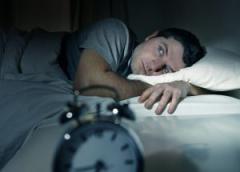
The apparent adverse effects of a lack of sleep are low energy and trouble concentrating. But there are other harmful effects many are not aware of. Here are a few of them:
Weight gain: Most dieters know that eating before bed is not helping their efforts to lose weight. But a lack of sleep can pack on the pounds as well.
Deep sleep allows our bodies to release growth hormone, lower blood sugar, and process leptin, a protein hormone that regulates appetite and metabolism. When you are sleep deprived, none of these things happen as they should. This can wreak havoc on our waistlines.
A weakened immune system: Our immune systems protect us from bacteria, viruses, toxins, microbes, and parasites. Considering that we are entering flu season, a weakened immune system is the absolute last thing we need. This can happen as a direct result of a lack of sleep
High blood pressure: As if these other concerns weren't bad enough, add this nightmare to the list: when you sleep, your heart gets to rest and can take a break. But skipping sleep makes your heart work overtime. This can elevate blood pressure and lead to other cardiovascular problems.
Lack of Growth Hormone production. During sleep, growth hormone is released. Scientists believe that this is a natural part of the body's healthy tissue repair. Can you see why deep sleep combines so well with HGH therapy? Sufficient rest kicks in HGH therapy and creates the internal environment in your body to allow HGH therapy to work at its highest level, with one goal in mind…to make you younger.
And more…many more: lack of sleep can make you accident-prone, cause a lowered sex drive, accelerated aging, depression, and even increased mortality.
All of these reasons should make you aware of the importance of consistent, sound sleep as a critical component of your overall health plan. The pace of modern life, with a plethora of distraction and an ever-increasing workload, can make getting a good night's sleep challenging…far more challenging than in the past.
In desperation, many folks turn to prescription sleeping pills. But they may come with some horrendous side effects. Hallucinations, sleepwalking, memory problems, excessive grogginess, and fatigue the following day are all too familiar.
This is due in part to the fact that sleeping pills can reduce the overall quality of your sleep; this means less of the deep, restorative, and dream-inducing sleep your body craves.
Another drawback of sleeping pills is that they can lead to addiction. Some people swear they can't sleep without them. They also lose their effectiveness when you quit using them since they produce no long-lasting beneficial effects.
If all of that weren't bad enough, consider this. Building up a tolerance for sleeping pills is easy. This is caused by the brain receptors becoming less sensitive to them. This can happen in less than a month. Clearly, sleeping pills are not the answer.
Here are a few general guidelines for getting and staying asleep
No caffeine or alcohol for at least 5 hours before bedtime
No strenuous exercise just before retiring
Try to get to bed at the same time every night. This will develop a body rhythm that will make it easier to fall asleep
Keep your bedroom completely dark
Try to relax and wind down before going to bed
There is also something else to consider. Did you know that failure to drink enough water can aggravate sleep problems? Here's why:
Dehydration - a hidden cause of insomnia
It's a simple equation. The more you are dehydrated, the harder it is for your body to recharge and detoxify. The longer it takes to detoxify, the more sleep you require. Dehydration can adversely affect your ability to sleep, thus resulting in a vicious circle.
Most people know that they should stay hydrated during waking hours. But your body needs to stay hydrated during sleep.
Also, research indicates that dehydration may cause your mind to be over-active. This can result in you having trouble getting to sleep.
Have you noticed how these energy drinks have exploded in popularity? When standing in the checkout line at your neighborhood grocery store, see the vast array of energy drinks, shots, and chews beckoning for your attention.
And how about the continual bombardment of advertising on television and radio for these products?
It seems as if we are becoming a nation of sleepwalking zombies, always in need of an unnatural "energy jolt."
And it's not just energy drinks. Coffee, tea, sodas, and other caffeine-loaded beverages have become a more significant part of our daily consumption. The seemingly continual need for an "energy fix" explains the allure of these drinks.
Energy drinks are not the answer
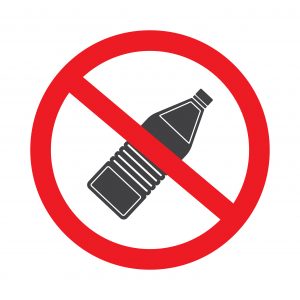 Overlooked is the danger of these drinks. There is no question that they are useful in the short-term. But since they are loaded with sugar, caffeine, and other ingredients, serious side effects can result.
Overlooked is the danger of these drinks. There is no question that they are useful in the short-term. But since they are loaded with sugar, caffeine, and other ingredients, serious side effects can result.
Insomnia increased or irregular heartbeat, irritability, and agitation are common complaints. There have even been fatalities as a direct consequence of consuming energy products.
There must be a better way to avoid chronic fatigue
Don't worry, there is - and we will discuss that in a minute. But before we delve into that, let's look for an answer to this question: Why can't we seem to make it through the day without being on the verge of collapse?
Dehydration: a hidden cause of fatigue
When we are dehydrated, our internal cleansing system can't work anywhere nearly as efficiently as it should, which overloads our organs and increases their workload.
The result? Feeling tired. Most of our body functions operate best when they are in proper fluid balance. Minute changes in fluid balance can affect us far out of proportion to what we may think.
If our fluid balance doesn't return to the correct levels, our blood volume can drop. This makes our heart work harder, which causes the heart to draw blood from the muscles and organs. The result?Muscle cramps, light-headedness, and fatigue.
If that weren't bad enough, dehydration causes cravings…and cravings are quite common among chronic fatigue sufferers. Of course, these are the wrong kind of needs - sugar, alcohol, caffeine, and other harmful things that make a bad situation worse.
Finally, there is one more thing to consider. Dehydration causes poor digestion. This causes the digestive system to work harder, resulting in…you guessed it…feeling tired…and possibly causing insomnia.
Now you can see why the Conscious Evolution Lifestyle places so much emphasis on water. The message is simple: if you are looking for deep, restorative sleep continually, forget sleeping pills, ditch the energy drinks, consider trying the supplements recommended earlier (Melatonin, Valerian Root, and Tryptophan)…and drink more water.
Get Off The Couch! Physical Fitness: The Fountain of Youth
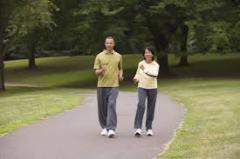
As your body moves feel the surge of growth hormone flooding through your veins, you will notice your energy levels will skyrocket!
So why not take advantage of this by getting and staying active?
If you are sick and tired of looking in the mirror and not liking what you see…or if you need to lose weight and gain more energy…and if, after years of neglect, you are feeling a bit guilty about not doing more for your body…then stop thinking about it.
Do something about it.
Combining the right workout routine with the Conscious Evolution Lifestyle recommended high-quality nutrition, the latest cutting-edge supplements, and HGH and TRT will produce wonders far beyond what any of these practices could ever do on their own.
So let's get after it, and start looking and feeling decades younger. The right fitness program will allow you to:
Blowtorch ugly, unhealthy fat
Skyrocket your energy levels and reduce stress
Discover muscles you never knew you had
Strengthen your heart and lungs…in an amazing quick time
Develop freakish flexibility, fluidity, and balance
Pump up your health and quality of life
Develop a lean, toned, muscular body that is efficient, and will do what you want it to do
Prevent or reduce the effects of illness and disease
Improve the performance of your favorite sport
Prevent injury and improve bone density
Dramatically boost your metabolism
Fall into deep, restorative sleep - every night
Improve your posture
Develop laser-like mental focus
Add color and youthful glow to your skin
Finding the correct exercise and fitness routine that fits your lifestyle and personal circumstance will take some research and experimenting. You may consider hiring the services of a certified fitness trainer. But for starters, here are a few general guidelines:
Start Slowly. Every January, gyms are crowded with new members, intent on keeping their New Year's resolution to lose weight and get in shape. However, by March, the gyms are back to normal. Why? Because the overwhelming majority of new members are in a mad rush to achieve their dream body.
Consequently, they try to do too much too fast. When the inevitable injuries come or their progress is not happening as quickly as they were led to believe, they become discouraged - and revert to the recliner. Don't become a fitness casualty. Take things slowly, especially if you have been inactive for quite a while.
Strive for balance. Strength, cardiovascular endurance, flexibility, and balance are all essential components of health and fitness. Yet many people only want to work at what they feel comfortable with. For example, muscular men continue to lift weights and refuse to get out and run. Marathon runners built like matchsticks refuse to touch a barbell, and flexible women capable of performing Yoga at contortionist levels are afraid to pump iron for fear of becoming "too muscular." This is wrong on all levels. Everyone needs strength, endurance, flexibility, and balance for daily living. If you are weak in one of these areas, this is your body telling you to devote more time to it…not ignore your weakness.
Compete with yourself. You do not have to enter a bodybuilding competition or run a marathon to become physically fit. Nor do you have to compare yourself with anyone else. Instead of looking at someone and wishing you looked like they do, focus on developing the best body you can.
It's a marathon - not a Sprint. When asked when you plan to stop exercising, the correct response is to answer with another question: "when do you plan to stop brushing your teeth?" Remember, when done correctly, fitness is a way of life. Many people continue to be active well into their 80s and 90s…and a few even beyond.
Let's break these fitness categories down for a closer look.
Resistance Training
One of the best ways, if not the best way to stimulate our natural production of growth hormone is through resistance training, or as some would say strength training.
This can be done with barbells, dumbbells, kettlebells, exercise bands, or just plain old body-weight exercises. Here's a quick look at each of these methods:
Barbells and Dumbbells

They're old-fashioned. They're basic. They're hard. But they work. All serious, competitive bodybuilders and power-lifters use them as their foundation - every single one.
But so do countless homemakers, harried executives, senior citizens, and just about anyone else that wants to get stronger. Remember, you have the freedom and luxury to lift only slightly beyond your comfort level.
You are not in competition with the huge monsters in popular muscle magazines. But that doesn't mean for one second that you can't reap the benefits of working out with weights.
There are countless theories, routines, and a seemingly endless array of advice about how to approach the activity of bodybuilding. But the message to remember is this: relax! It's not as complicated as it initially seems. Here's the deal…
The basic exercises work wonders. Always have, always will. Barbell bench presses, incline dumbbell presses, and dumbbell flies are a good, basic chest routine.
For the back, you can't beat the combination of pull-ups and bent-over barbell or dumbbell rows. If you have access to a lat pulldown machine, add lat pull-downs and seated rows. For the shoulders, overhead presses with a barbell or dumbbell, along with front, side, and rear lateral dumbbell raise, will do the job.
For arms, barbell or dumbbell curls will work the biceps, while Close-grip barbell bench presses, 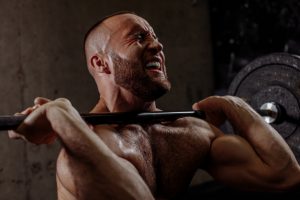 overhead dumbbell triceps presses, and dips will blast the triceps. For legs, squats are the king.
overhead dumbbell triceps presses, and dips will blast the triceps. For legs, squats are the king.
For that ripped abdominal six-pack, hanging leg raises from a chin-up bar, crunches and planks will hit all angles.
This is far from a comprehensive list of weight-lifting movements. But no matter how long you have been lifting, never stray too far from the basics. They are your foundation, so make your foundation strong.
For the sake of brevity, we have omitted the details of the correct form for these exercises. This information is available through books, magazines, YouTube, or a personal trainer. No matter how you learn the proper way, never forget that form trumps weight. If you can't perform the exercise in strict form, check your ego at the door and drop the weight. This will both speed up your gains and prevent injury.
One last thing: many women are concerned about gaining too much muscle. Is this likely? In a word, no. The overwhelming majority of women just do not possess the hormones to get huge in a muscular sense.
But if you are a woman who is concerned about looking too masculine, consider this: you can always stop lifting if your muscles are growing too fast for you, or at least drop the amount of weight you are lifting and change your program. So please don't worry…you won't turn into a man!
Kettlebells
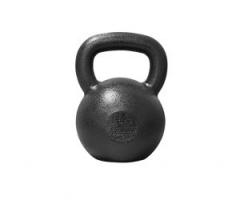
Kettlebells are an ancient fitness secret from Russia that has been referred to as "The AK-47 of muscle-building, fat-burning fitness." They look like small cannonballs with handles. As with weights, there are many exercises to do with kettlebells. If you give them a try, pick the ones you are comfortable with.
Exercise bands
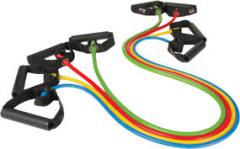
These are available at any sporting goods store, as well as many retailers. They come with instructional DVDs and are ideal for taking on the road.
Body-weight Exercises
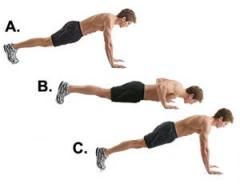
What we're referring to here is good old-school calisthenics. They fell out of favor decades ago, due to the popularity of weight-lifting.
But they have made a remarkable comeback. They can ramp up your strength, as well as endurance. They put little stress on your joints; you can do them at home, and, like exercise bands, are perfect for the road.
Cardiovascular Fitness
A grim fact: as we age, the cells in our lungs start to evaporate and disappear. This causes our lungs to shrink, and we lose our stamina, strength, and our ability to fight off disease and infection.
We begin to show all the debilitating and insidious effects of aging: always getting tired, getting sick more often and staying ill longer, not wanting to get out of the rocking chair, and even having trouble concentrating, since our bodies and brains become oxygen-starved.
Several decades ago, this problem was recognized, and the solution of the time was aerobics…running, jumping around, or pedaling for 45 minutes to an hour. But there were some problems with this approach.
At the time, the prevailing wisdom was "the more, the merrier." Spending up to an hour on a treadmill, stationary bike, or stair-stepper was the usual and accepted way to do cardio.
This was done at a slow, steady pace. Although simple observation in any gym revealed many folks did hours and hours of this week after week (but didn't lose much weight), no one ever questioned the effectiveness of training this way - until recent research has shattered this antiquated notion.
Let's start with some simple logic. The main benefit of aerobic exercise is to strengthen the heart and lungs. The heart is a muscle and should be trained like any other muscle. Let's take a brief look at how we train different muscles.
For example, if we are training biceps, we usually do 3-4 sets of barbell or dumbbell curls with 60-80% of the maximum weight we can curl for one repetition. As a general guideline, we would do between 6 to 10 repetitions.
What we wouldn't do is take a one pound dumbbell and curl it 10,000 times for a one-half hour. But that is precisely what slow, long-distance jogging does.
Human beings did not evolve running this way. Our caveman ancestors didn't run marathons. Instead, they sprinted short distances to either get dinner or avoid being dinner. Today, this is called High-Intensity Interval Training (HIIT).
A massive benefit of HIIT is that this type of training allows you to get a great cardio workout in 10 to 20 minutes…No more! Here are some ideas for a HIIT routine. Keep in mind that these are 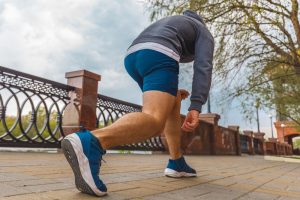 only guidelines.
only guidelines.
Every person's conditioning is different so some folks will need more intensity, some will need less. Once again, this will give you ideas for developing your own personal routine.
Running: begin with a slow, 2-minute warm-up jog. Then sprint for 30 seconds, then walk for 30 seconds. Repeat this cycle 12 times, then finish with a cool-down walk for 2 minutes. In less than 20 minutes, you're done!
Stationary Bike, Elliptical, Rowing Machine, Jumping Rope, or Stair-stepper: Same as above. Always begin with at least a 2-minute warm-up at a comfortable pace for injury prevention. Then start the explode/recovery cycles. Don't forget to take at least 2 minutes for cool-down purposes.
An important point to remember is this: the recovery part of the cycle does not mean coming to a complete stop. Keep moving but at a much slower pace.
HIIT workouts are done for 20 minutes at a time, three days a week. This adds up to only one hour per week! Contrast that with the hours of training spent by long-distance runners each week.
Another benefit of HIIT is that your joints, muscles, and tendons will not be subjected to the constant pounding that long-distance runners suffer. Over time, this pounding adds up, causing many long-distance runners to stop running altogether.
More good news: you are allowed and encouraged to set your own pace. Please don't be intimidated by the sound of high-intensity. Just remember, it's all relative, depending upon the shape you're in.
As mentioned earlier, everyone is at a different level of conditioning. Therefore, the interval specified above times is only guidelines. For example, an Olympic-level athlete may sprint all-out for 2 minutes, then walk for 10 seconds.
At the other end of the spectrum, if you have been sedentary for a long time, or if you are very old, over-weight, or recovering from a severe illness, you will probably be reversing the Olympian's ratio, and substitute a slightly quicker pace for an all-out sprint. You can alternate between slow and very slow, and pick things up gradually. HIIT will still work.
The keys are consistency and improvement. By gradually increasing the intensity time, you will vaporize fat and ramp up muscle gains - as a direct result of more growth hormone being released.
What about walking? Can that help?YES! There are a few concerns about HIIT. One is that HIIT 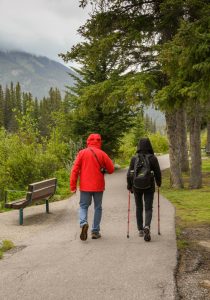 is impossible for most of us to do 5-6 times a week, due to over-training.
is impossible for most of us to do 5-6 times a week, due to over-training.
Also, HIIT may lead to injury more often than the traditional, long, and slow cardio. Both of these are valid concerns.
The answer to both of these concerns is simple. If you are just starting, or not in good physical condition, merely substitute walking for the more intense cardio activities…and vary the pace of your walking.
Again, this could be 30 seconds walking quicker, then 30 seconds walking slower. As always, the intervals can be adjusted, depending upon your conditioning. If done in this manner, HIIT can work for virtually anyone, at any age, in any condition.
Still another benefit of HIIT is that this type of activity triggers what is called "afterburn." When you finish this explode/recovery training, your body immediately begins to burn fat to replace the energy you have just expended.
Here's the secret as to why HIIT works so well: this style of training triggers the release of a "super-hormone" that melts fat at a blistering pace. The hormone?Human Growth Hormone.
Slow-paced, long-distance jogging can trigger the opposite response. We are told by many fitness trainers that long, slow bouts of cardio will burn fat while you work out - and you are advised to stay in that fat-burning zone as long as possible.
The problem with this approach is that this type of cardio can produce the exact opposite effect! Why? Because we don't want to burn fat while we are working out.
When this happens, we are telling our bodies that we need fat. Our adaptive bodies acknowledge that by making more fat and saving it for the next cardio session when it will be required.
By contrast, as mentioned earlier, HIIT burns fat only when we are done with our workout and are resting.
Still not convinced? Here's something else to consider. Look at a sprinter's muscular body. Then look at a typical (extremely lean) marathon runner. Who would you rather look like? The reason for this is easily explained: HIIT causes more muscle retention since it activates more muscles than slower cardio.
When HIIT is combined with Growth Hormone Replacement Therapy, the results are astonishing. Save time, blowtorch fat, pump up your muscle, look younger, and skyrocket your energy levels.
YOGA
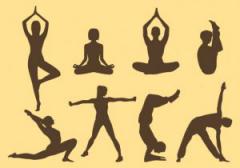
At first thought, it may seem a stretch (pun intended) to connect yoga with growth hormone release. As mentioned earlier, the pituitary gland releases growth hormone naturally during sleep.
At this time, no direct research can definitively tie yoga to growth hormone release. However, we do know that the pituitary secrets more growth hormone when we are relaxed - and relaxation helps us sleep better.
Regular practice of yoga can also lengthen the muscles. This may help correct posture and make you appear taller. Yoga classes are increasingly common, and much is available through books, DVDs, and YouTube.
Balance Training
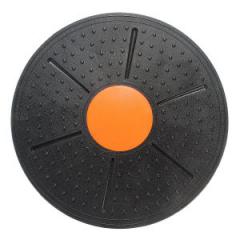
When we do traditional exercises on a stable platform (like the floor or on a bench), we decide what muscles to use.
Consequently, the larger muscles do most of the work, and the smaller muscles and our nervous systems tend to get lazy and go to sleep. As a result, our muscles don't work together as a team.
But when we do movements on unstable surfaces (stability balls, PVC pipes, wobble disks, and slant-boards), we are continuously stabilizing and re-balancing ourselves.
This means that our bodies decide on what muscles are needed, and our smaller muscles and nerves are summoned into active duty.
This results in a dramatic increase in proprioception, which is defined as the ability to perceive position, pattern, and speed of the body or parts of the body by gathering more accurate information and delivering that information quickly to the brain.
The result?Increased endurance, balance, agility, all-around athletic performance, and far more efficient body movement. As an added benefit, this style of training is excellent for preventing falls…a significant hazard for senior citizens.
As with earlier-mentioned training methodologies, the specifics of this program are available through books, DVDs, and YouTube.
Chi Kung
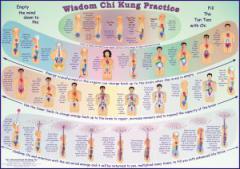
Chi Kung is the art of developing energy by deep breathing, coordinated with slow movements and visualization.
For thousands of years, the Chinese people have sworn that Chi Kung can cure and prevent disease, promote health and longevity, reduce stress, eliminate toxins, increase libido, and improve sports ability. Chi Kung has also been described as a "Fountain of Youth."
The practice of Chi Kung is soft and comfortable on the body. As with Yoga, the more relaxed we are, and the more healthy we are, the more efficient HGH therapy will be.
If you are interested in learning and practicing Chi Kung, try to find an experienced instructor, or, failing that, learn from a variety of books, videos, and YouTube.
A Word About Fitness Supplements
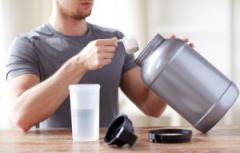
Decades ago, most fitness supplements were nowhere near as useful as hyped.
This was due in large part to the widespread abuse of anabolic steroids. Since steroids were previously relatively easy to obtain, serious bodybuilders did not need effective supplements.
Therefore, the supplement companies produced and marketed many inferior products.
However, due to the enactment of new laws targeting steroids, demand for bodybuilding supplements that worked soared.
At first, the supplement companies were challenged. An analogy is the fuel crisis of the 1970s. In the 1960s, engines were big, bad, loud gas hogs. Fortunately, gas was cheap at that time.
But suddenly, the days of paying 30 cents per gallon at the fuel pumps were a distant memory. The auto companies were forced to produce a more powerful, fuel-efficient car, in a smaller package.
It took time, but by the 1980s, the result was cars that had engines far more powerful than the "muscle cars" of the 1960s. The bodybuilding supplement industry has a similar evolution. Here are a few supplement recommendations:
Protein drinks. Whey protein is fast-acting and should be taken immediately after your workout. Casein protein is slower acting and should be consumed in the evening, allowing it to work while you are sleeping slowly
Creatine Monohydrate. This safe and efficient supplement can increase muscle size and strength by altering cell volume (allowing more water into the cells).
Miscellaneous Tools and Approaches
Medicine balls, Indian Clubs, Suspension Training, Plyometrics, Tai Chi - the list can go on and on.
The point is this: we are living in a real "golden age" of physical fitness. Never before in history have we been blessed with such a vast array of fitness options.
To make sure that your HGH therapy has a maximum effect, stay active. Try several methods for a balanced approach, or find your fitness niche…then just do it!
References
Nutrition: How to Make Healthier Food Choices
Dietary Supplements: What You Need to Know
The importance of staying hydrated
What Is Bodybuilding? Overall Benefits Are Absolutely Amazing!

- HGH Injections: A New Revolution in Longevity, Health, Medicine, and Life Quality -- HGH Injection [Last Updated On: September 2nd, 2025] [Originally Added On: November 10th, 2020]
- The Baby Boomer Dilemma -- To Use, or Not to Use, HGH to Fix Your Lifestyle Mistakes [Last Updated On: November 16th, 2025] [Originally Added On: January 10th, 2021]
- How HGH and Testosterone Can Make a Huge Difference in Your Life [Last Updated On: October 24th, 2025] [Originally Added On: January 11th, 2021]
- 34 Good Health Tips to Improve Your Health and Wellness [Last Updated On: October 20th, 2025] [Originally Added On: January 17th, 2021]
- Personal Human Growth Hormone HGH Testimonial [Last Updated On: October 21st, 2025] [Originally Added On: January 18th, 2021]
- Starting Your HGH Therapy Program [Last Updated On: October 18th, 2025] [Originally Added On: January 26th, 2021]
- Human Growth Hormone for Body Sculpting [Last Updated On: August 20th, 2025] [Originally Added On: January 27th, 2021]
- Human Growth Hormone Replacement Therapy for Men [Last Updated On: May 24th, 2025] [Originally Added On: January 29th, 2021]
- Get Optimal Results on an HRT Program with Proper and Effective Nutrition [Last Updated On: February 17th, 2025] [Originally Added On: February 4th, 2021]
- An Introduction to the Lymphatic System [Last Updated On: October 19th, 2025] [Originally Added On: February 6th, 2021]
- Basic Human Growth Hormone Information [Last Updated On: October 23rd, 2025] [Originally Added On: February 11th, 2021]
- Buying HGH Legally. Is HGH legal in the United States ? [Last Updated On: October 22nd, 2025] [Originally Added On: February 18th, 2021]
- Zap The Ugly Fat With Human Growth Hormone [Last Updated On: October 15th, 2025] [Originally Added On: February 20th, 2021]
- COVID-19 Global Pandemic: Boosting Your Immune Defense with Growth Hormone [Last Updated On: August 22nd, 2025] [Originally Added On: February 24th, 2021]
- Early Exposure to BPAs Can Cause Serious Damage Later in Life for Elderly Men [Last Updated On: May 18th, 2025] [Originally Added On: March 2nd, 2021]
- Ascendis Pharma Given the Go-Ahead by FDA to Develop Long-Acting HGH Treatment [Last Updated On: August 23rd, 2025] [Originally Added On: March 4th, 2021]
- Growth Hormone Leads to Liver Regeneration and helps support healing post surgery. [Last Updated On: September 5th, 2025] [Originally Added On: March 5th, 2021]
- Testosterone Levels Main Determining Factor Behind Fracture Risk in Older Men [Last Updated On: March 23rd, 2025] [Originally Added On: April 23rd, 2021]
- Anti-Aging HGH Research of Growth Hormone Injections [Last Updated On: October 17th, 2025] [Originally Added On: April 24th, 2021]
- Anti-Aging News: HGH Shown to Reverse Aging in New Study! [Last Updated On: May 23rd, 2025] [Originally Added On: May 4th, 2021]
- Stop Premature Aging Dead in its Tracks with Growth Hormone! [Last Updated On: May 28th, 2025] [Originally Added On: May 14th, 2021]
- Human Growth Hormone and Cell Regeneration [Last Updated On: October 16th, 2025] [Originally Added On: May 20th, 2021]
- Increased Belly Fat? Blame it on Your Hormones! [Last Updated On: May 22nd, 2025] [Originally Added On: May 21st, 2021]
- Joe Rogan -- Palumboism Due to Hormone Abuse? [Last Updated On: October 14th, 2025] [Originally Added On: May 22nd, 2021]
- Hormone Therapy May Help Post-Menopausal Women Postpone Onset of Atherosclerosis [Last Updated On: October 13th, 2025] [Originally Added On: May 23rd, 2021]
- If You Suffer From Low-T, You’re More at Risk for Severe COVID-19 Symptoms [Last Updated On: May 30th, 2025] [Originally Added On: May 30th, 2021]
- Hormone Effects:: My Mind Is Racing and I Feel Like I’m Going Crazy - Could Hormones Be the Cause? [Last Updated On: February 20th, 2025] [Originally Added On: August 3rd, 2021]
- Fake News About Hormone Replacement Therapy for Women [Last Updated On: May 17th, 2025] [Originally Added On: September 16th, 2021]
- Overcome HGH Deficiency with Ipamorelin Acetate Injections [Last Updated On: September 18th, 2025] [Originally Added On: September 21st, 2021]
- About to be a Father? How Hormones Will Affect Your Parenting [Last Updated On: April 8th, 2025] [Originally Added On: March 7th, 2022]
- Fighting Off Brain Fog to Think More Clearly [Last Updated On: November 7th, 2025] [Originally Added On: May 30th, 2022]
- HGH Vs. Testosterone: Which One Do You Need? [Last Updated On: May 4th, 2025] [Originally Added On: November 30th, 2022]
- Low HGH Levels Can Lead to Cognitive Impairment [Last Updated On: February 20th, 2025] [Originally Added On: April 12th, 2023]
- The Role of Human Growth Hormone (HGH) and Cognitive Impairment [Last Updated On: November 14th, 2025] [Originally Added On: February 11th, 2025]
- The Impact of Hormones on Mental Health [Last Updated On: December 14th, 2025] [Originally Added On: February 17th, 2025]
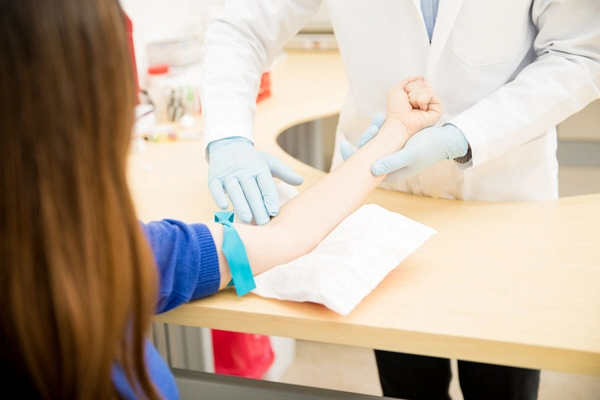
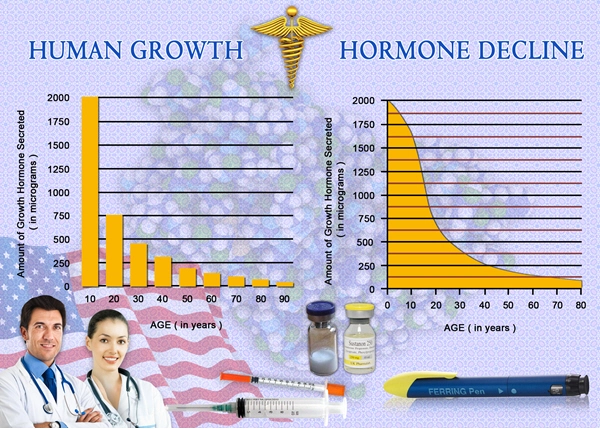
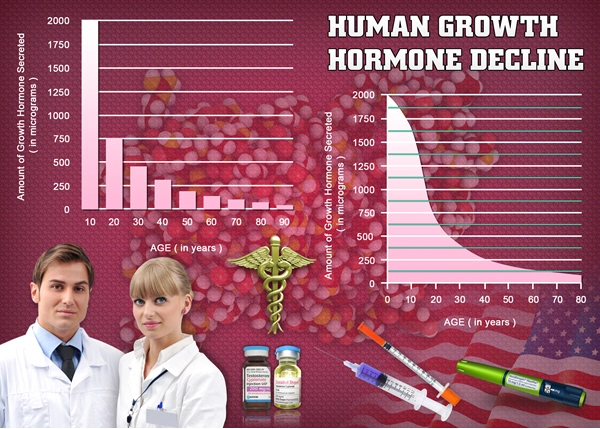
List of USA state clinics - click a flag below for blood testing clinics.
Word Count: 7331











